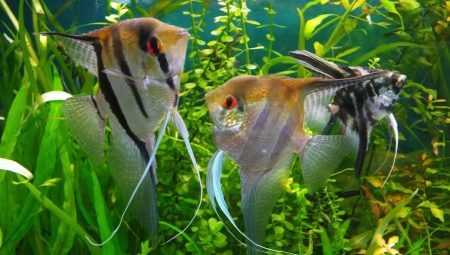Fish farming in apartments and private houses has been practiced for a very long time. New people constantly join this hobby. It is important for them to know how the breeding of fish occurs. In this article we will talk about scalars.
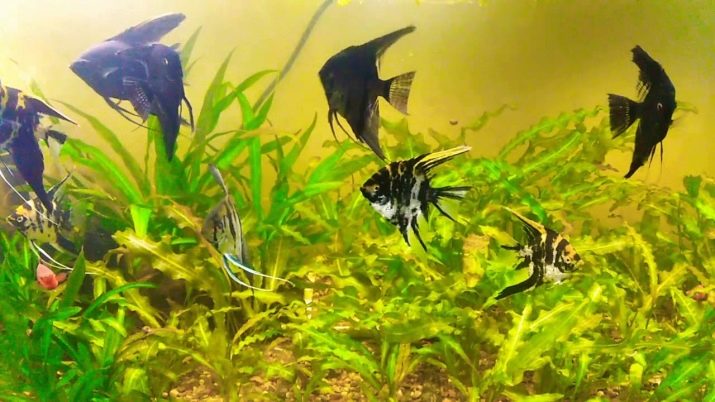
Features
This type of fish is highly appreciated for the simplicity of care and for external grace. Few other aquatic animals can compare with them. by brightness of color and attractiveness of geometric bends of the body.
The fry of a scalar are more capricious than adults. This species is characteristic special “sailing” appearance of the fins. It is not for nothing that in foreign countries these representatives of the perch order are called "angels." The angelfish are bred for about 100 years, and all this time aquarists are delighted with them. The advantages of the species are:
- superior intelligence;
- unpretentiousness in everyday life;
- parental care towards fry.
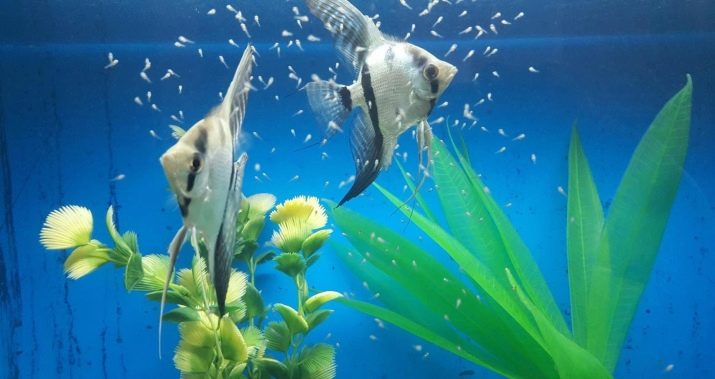
Recommended acidity of water is from 6 to 7.5 units. Its rigidity should not be higher than dH 10. Among all cichlids, scalar is characterized by minimal aggressiveness. They are sympathetic even to small fish and live-bearers. Good neighbors are:
- gourami;
- medium-sized catfish;
- laliuses;
- red swordsmen;
- zebrafish
- dumplings.
But at the same time it is not permissible to place guppies in the aquarium with scalars. Then they will be eaten sooner or later. Compatibility with goldfish is also very poor (due to differences in diet and propensity to mutual conflicts). Do not contain scalar along with discus. Under favorable conditions, you can expect that the fish will live at least 10 years.
In a tank with a capacity of 100 l, you can plant no more than 2 scalars. Better if there will be only one individual. In favorable conditions, adult specimens reach impressive dimensions. If we take into account the still large range of fins, it becomes clear that the capacity should be at least 250 liters. Covering the aquarium is not required, as this species is not prone to jumping out.
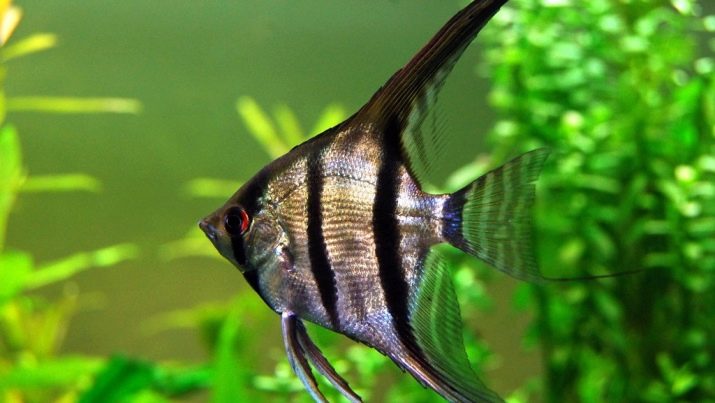
Preparation for propagation
Angelfish can reproduce even in a closed artificial pond. However, owners will have to master the art of identifying individuals by gender. Specific distinguishing features are slightly expressed. The "boys" are larger in size, and the fins are not single, but are paired. In addition, their forehead is “decorated” with a tuber of adipose tissue, and the front fins are bifurcated.
At the youngest age, it is impossible to detect characteristic signs. They appear only after biological maturation is complete.
Normal reproduction is possible only if during the entire period of life the water is kept clean and the optimum temperature is maintained.
It happens that even the inspection of fish by professionals does not allow us to determine their gender. Then it remains only to count on an independent, spontaneous folding of pairs.
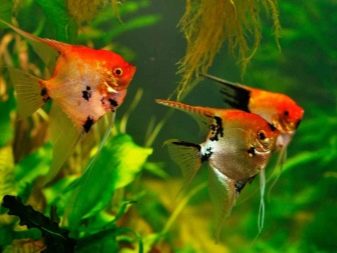
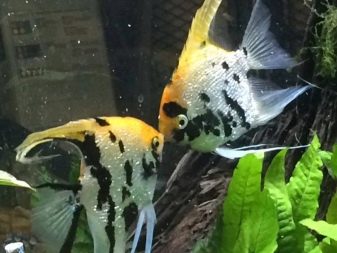
Having split into deuces, scalars begin to spend as much time as possible nearby. If couples have already formed, it is extremely foolish to separate them. Sometimes, in this case, they lose the ability to spawn in principle. Spawning itself needs to be stimulated:
- raising the temperature to 30-32 degrees (but not more);
- about 3 or 4 times a week replacing water (adding 10% of fresh liquid);
- using filters to reduce the hardness of the water in the aquarium.
It is also very important to provide sufficient free space for laying eggs. Having decided to breed scalar at home, you will have to give it special hard surfaces. They can be special items from:
- plastics
- burnt clay;
- wood.
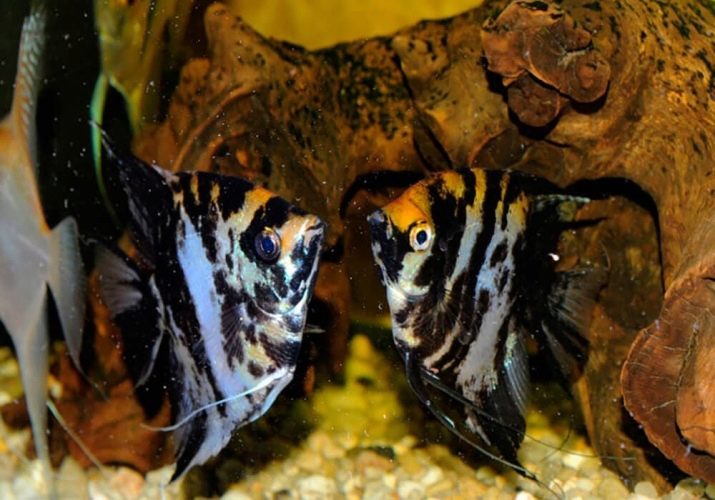
When there are no such items, caviar will be laid on the walls of the aquariums. It is impossible to transfer it to an incubator. Of course, scalars need a separate container for laying eggs. The spawning place will be chosen very carefully, and when the decision is made, the fish will desperately guard and equip it. Dirt is removed from the leaves of plants and even from stones, using fins or jaws.
If the fertilized masonry is moved quickly to another tank, spawning will occur once every 2 weeks. This helps to breed fish in significant quantities. When caviar is moved between containers, it must be reliably protected from contact with air. Nets and other household accessories absolutely will not work. If spawning has begun in a common aquarium, the clutch should be relocated to a separate place, as other fish will mercilessly destroy the fry.
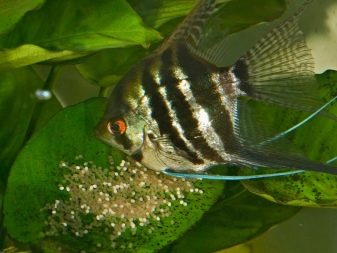
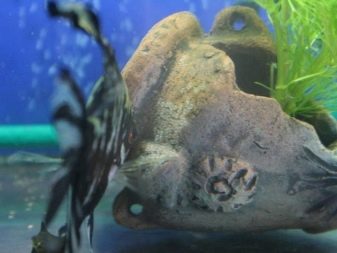
The whitewashed areas of the masonry are either removed or wait until they are eliminated by the fish themselves. Larvae appear on the second or third day after fertilization. They need to be fed after being turned into full-fledged fry. For this purpose, live dust and artemia nauplii are placed in the aquarium. Transfer to an adult diet can be made a month after hatching larvae.
It is important for novice fish lovers to know that the first experience in breeding angelfish often ends in failure. And blaming yourself does not make much sense. The next time you will need to carefully examine the animals, correctly recognize their gender and timely transfer the clutch to the incubator.
Please note that spawning usually occurs in the evening hours. Its duration is 40-90 minutes.
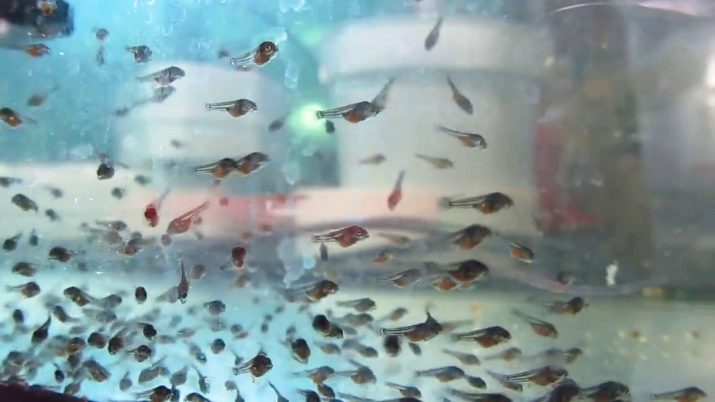
Content scalar at home
For these fish, it is necessary to maintain a thermal regime of at least 27 degrees. It is equally important to use the right feed. The norm is the use of live food (including bloodworms). Putting frozen food in an aquarium is only possible in extraordinary situations. And even then one should not get too carried away with it.
Those remaining for any reason without a pair of fish should be sold or given to other people. All other inhabitants of the aquarium and even representatives of the same species take up arms against such scalars. Angelfish are very aggressive and tend to sort things out by force.
Big problems are the care of the fry. They need to be fed constantly, several times during the day. Draining water is also very difficult. We have to come up with original solutions so that most of the young livestock is not poured out. Even the thinnest droppers and tubes for juice will not help.
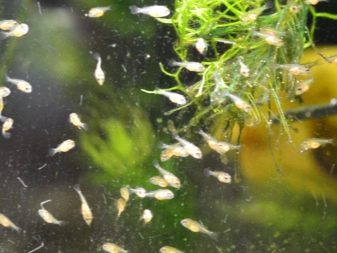
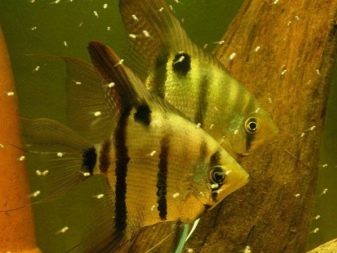
Those who do not breed fish on a large scale and do not have serious equipment should not rely on the cultivation of a large number of fry. The maximum amount that can be withdrawn at home is about a hundred.
At the age of 3 months, scalar requires an aquarium of 50 liters. In a very cramped space, fish are stressed, sick and may even die. And even if there are no such problems, the scalar will remain dwarf for the rest of its life.

Lighting for this species should be of moderate intensity. Shaded areas in the aquarium are required. The shadow is easiest to create by planting vegetation in a special way. But a very bright light is strictly contraindicated. It causes severe nervous shocks.
Scalaria lives best in an aquarium where vallisneria grows. Other plants with long stems are also good. It is these underwater thickets that fully reproduce the natural habitat of fish. To design a vessel with snags and other similar elements can be at your discretion. No shelter needed.
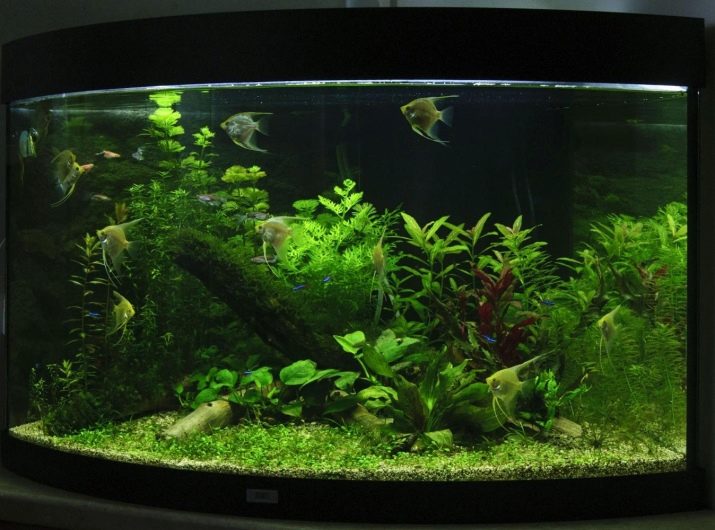
Below, watch a video with tips for breeding scalars at home.
